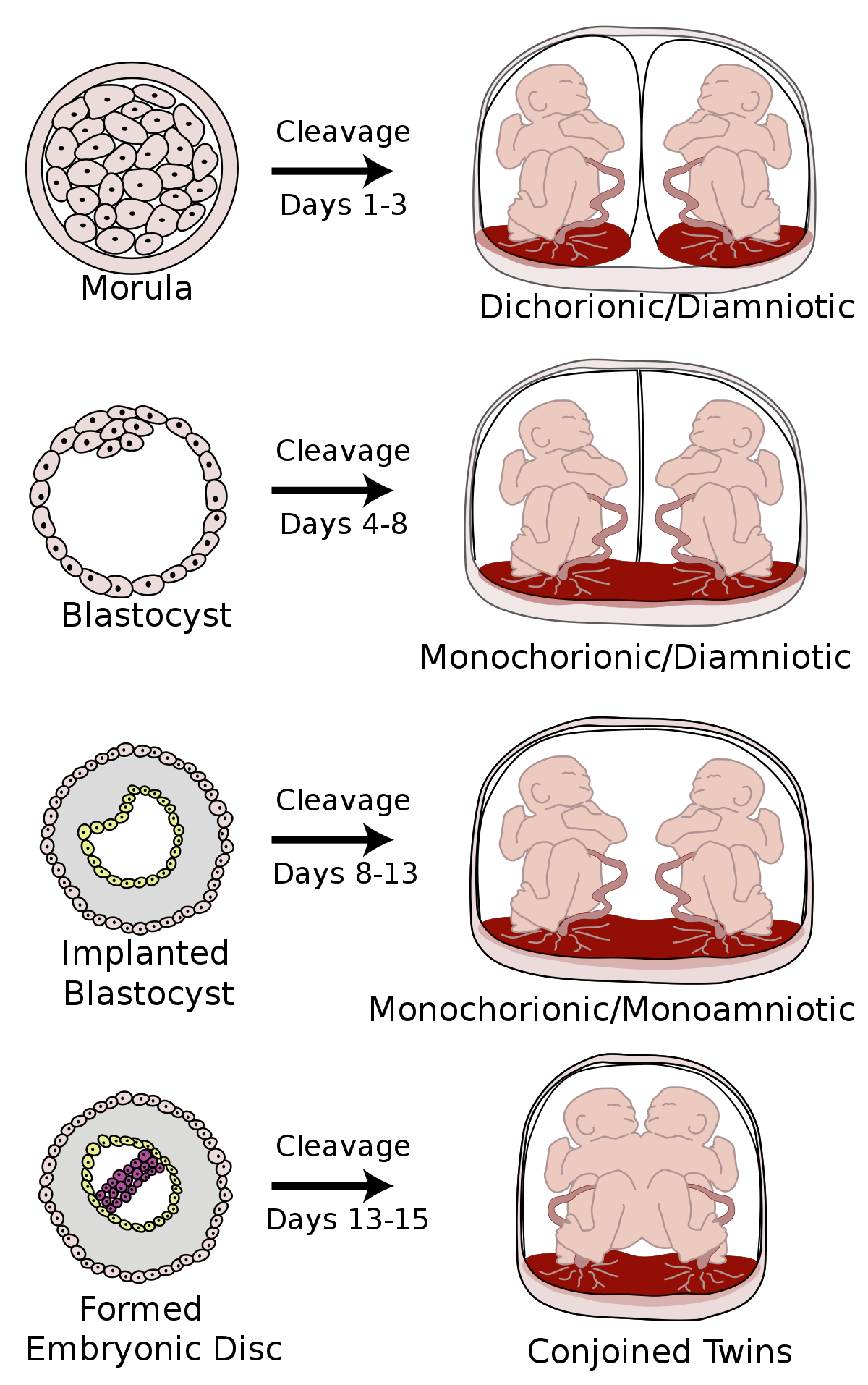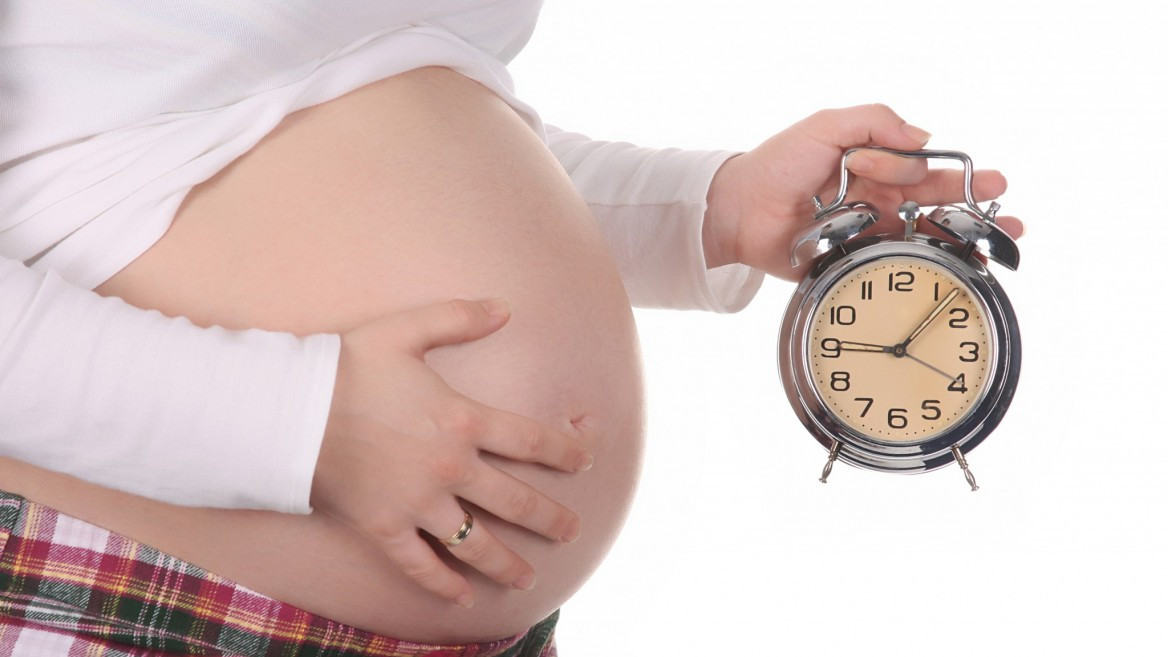Definition
A multiple or twin pregnancy is a pregnancy with more than one fetus. Pregnancy occurs when an egg from a woman's body meets sperm from a man's body.
Identical Twins
When fertilization occurs with only one egg and then this egg divides, it results in identical twin embryos. This type of pregnancy produces identical twins.
Fraternal Twins
If more than one egg is released during a menstrual cycle and each egg is fertilized by a different sperm, more than one embryo will implant and grow in the uterus. This type of pregnancy results in fraternal twins, which are more common than identical twins.
Causes
Pregnancy is one of the many things that married couples (husband and wife) dream of. However, not all couples easily achieve pregnancy. Some require specific treatments to conceive, such as the use of ovulation-stimulating drugs and in vitro fertilization (IVF).
Fertility Stimulation Therapy
The use of fertility drugs in women to stimulate the release of eggs (ovulation) often causes more than one egg to be released from the ovaries, which can lead to twin, triplet, or even more pregnancies.
In Vitro Fertilization
IVF or in vitro fertilization, is a process where fertilization is carried out outside the womb. Generally, the mother's egg and father's sperm are brought together in a petri dish—commonly used in laboratory settings. Once fertilization is successful, the formed embryo is transferred to the mother's uterus.
Therefore, IVF can cause twin pregnancies when more than one embryo is transferred to the uterus. Identical twin pregnancies can also occur if the fertilized egg splits after being transferred to the uterus.
Risk Factor
There are several factors that can increase the risk of a twin pregnancy. A woman may be at higher risk if:
- Maternal age is more than 35 years old. Women over 35 are more likely to release two or more eggs during a menstrual cycle compared to younger women.
- Has a family history of twins or twin siblings in the family.
- Taking medication to support fertility
Symptoms
Most twin pregnancies are detected during an ultrasound examination. However, women with twin pregnancies may experience more severe morning sickness or breast tenderness than those pregnant with a single fetus. Additionally, weight gain will be more and faster since more than one fetus is developing.
Diagnosis
In the early stages of a twin pregnancy, an ultrasound examination is conducted to see if each fetus has its own chorion and amniotic sac.

There are three types of twins:
- Dichorionic diamniotic: Twins with their own chorion and amniotic sac. They usually do not share a placenta and can be either fraternal or identical twins.
- Monochorionic-diamniotic: Twins that share a chorion but have separate amniotic sacs. They share a placenta and are identical twins.
- Monochorionic-monoamniotic: Twins that share one chorion and one amniotic sac. They share a placenta and are identical twins.
Management
A mother carrying twins is not experiencing a disease that needs treatment or therapy. Nevertheless, in contrast to a singleton pregnancy, there may be some adjustments necessary to accommodate the twin pregnancy condition.
Increase Caloric Intake
Most women carrying twins need to gain more weight than women with a singleton pregnancy. An additional 300 calories per day is needed for each fetus. For example, if a mother is carrying twins, she needs an extra 600 calories daily. For triplets or more, it is advisable to consult an obstetrician regarding the appropriate weight gain for the pregnancy.
Physical Activity
Staying active during a twin pregnancy is important for your health, but you may need to avoid strenuous exercise. Try low-impact exercises, such as swimming, prenatal yoga, and walking. You should exercise for at least 30 minutes per session. However, if there are problems with your pregnancy, your doctor may recommend avoiding exercise.
Cesarean Delivery
The risk of cesarean delivery is higher with twin pregnancies. In some cases, the fetus can indeed be delivered normally. The best delivery method for you will depend on:
- The number of fetuses, their position, weight, and health
- The health condition of the mother
- The experience of the obstetrician
Complications
Premature Birth
The most common complication of twin pregnancy is premature birth—when the baby is born before reaching full term, usually after 37-38 weeks of pregnancy. Babies born before 37 weeks of gestation may have a higher risk of short-term and long-term health problems, including breathing issues, feeding difficulties, and low body temperature (hypothermia). Other problems, such as developmental and behavioral disorders, may appear later in childhood or even adulthood.
If you want to know more about the Disorder of Typical Learning Development, read here: Disorders Of Typical Learning Developments - Understanding, Causes, Symptoms, And Treatment.
According to data, more than half of twin pregnancies result in premature birth. Triplets and up are almost always born prematurely. Even with the best medical care, very premature babies (those born before 32 weeks' gestation) might pass away or face serious health complications.
Twins born prematurely are also more likely to develop serious complications that can lead to cerebral palsy. Children born with prematurity-related complications may require lifelong medical care.
Twin-twin Transfusion Syndrome (TTTS)
Monochorionic twins have a higher risk of complications compared to those with separate placentas. One problem that can occur in monochorionic-diamniotic twins is twin-twin transfusion syndrome (TTTS).
In TTTS, the blood flow between the twin fetuses is unbalanced. One fetus donates blood to the other. The donor fetus will experience a lack of blood, and the recipient twin will have excess blood. The earlier TTTS occurs in pregnancy, the more serious the complications can be for one or even both babies.
Growth Problems
Twins are more likely to experience growth problems compared to singleton babies. Twins are called discordant if one fetus is much smaller than the other. Discordant growth is often found in twin pregnancies. This is not always a sign of serious problems.
Umbilical Cord Complications
Although monochorionic-monoamniotic twins are rare, this type of pregnancy is very risky. The most common problem is umbilical cord complications. Women with this pregnancy will be monitored more frequently and are more likely to undergo a cesarean delivery.
Preeclampsia
Preeclampsia—a blood pressure disorder in pregnancy—is more common in twin pregnancies than in singleton pregnancies and tends to occur earlier and more severely in twin pregnancies. Preeclampsia can damage many organs in the mother's body, particularly the kidneys, liver, brain, and eyes. When preeclampsia occurs, the baby may need to be delivered immediately, even if not fully developed. Serious preeclampsia that leads to seizures is called eclampsia.
Gestational Diabetes
Women carrying twins also have a higher risk of developing gestational diabetes. This condition increases the risk of preeclampsia and persistent diabetes mellitus later in life. Newborns may experience respiratory problems or low blood sugar levels. Diet, exercise, and sometimes medication can reduce the risk of these complications.
Postpartum Depression
Twin pregnancy can increase the risk of postpartum depression. This condition is characterized by intense feelings of sadness, anxiety, or hopelessness that interfere with the mother and even the father in carrying out daily tasks.
Prevention
Preventing twin pregnancies in natural pregnancies is impossible. However, in pregnancy with reproductive technology like IVF, twin pregnancies can still be prevented. Talk to your doctor if you are undergoing an IVF program to prevent twin pregnancies.
When to See a Doctor?
As with any pregnancy, you should have regular prenatal check-ups. In twin pregnancies, a mother may need more frequent prenatal check-ups with her obstetrician. Starting in the second trimester, you may undergo pregnancy ultrasounds every 4 to 6 weeks. If problems are detected, you may undergo additional tests or more frequent ultrasounds.
Looking for more information about other diseases? Click here!
- dr. Alvidiani Agustina Damanik
Multiple pregnancy. (2021). Retrieved October 20, 2022, from https://www.acog.org/womens-health/faqs/multiple-pregnancy
Multiple pregnancy : How does One avoid it? (2018) Apollo Fertility. Available at: https://www.apollofertility.com/blog/fertility/multiple-pregnancy-how-does-one-avoid-it/ (Accessed: October 20, 2022).
Multiple birth: Twins, triplets, Complications & Symptoms (2020) Cleveland Clinic. Available at: https://my.clevelandclinic.org/health/articles/9710-expecting-twins-or-triplets (Accessed: October 21, 2022).











